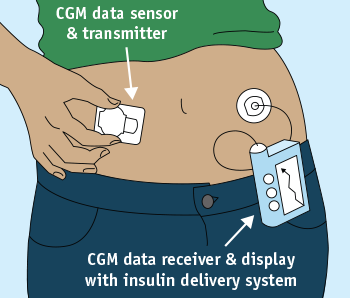
Is your sugar level normal?
Fluctuating blood sugar level is a normal process in our bodies. Depending on the time of the day or what you just ate or even the activity you are doing, your glucose or sugar level is either rising or falling. Most people’s bodies deal with this swing by secreting hormones – insulin, leptin, ghrelin are the more well known ones – which keep their levels within a normal range.
There is a growing number of people, however, whose bodies don’t processing blood sugars effectively. They are becoming insensitive to the signals these secreting hormone are sending. When this insensitivity last longer than normal they are labeled as pre-diabetic. If a correction isn’t made during this stage then it will lead to full-blown diabetes. This is a stage in the development of this disease when complications start rearing their ugly head.
Know the clues your body gives when sugar level is high or low
Our bodies have to work overtime to process the excess carbohydrates we eat each day. For those who are at risk of developing diabetes their bodies are not breaking down, and using, sugar from this excess . . . properly. This makes it imperative that they know the signals their bodies are sending them when their sugar levels are too high.
Anyone who suspects that they maybe susceptible to pre-diabetes or diabetes should pay close attention to the following hints their bodies give them.
- increased thirst and hunger
- a need to urinate more frequently
- muscle weakness and general fatigue
- vision becomes blurry
- experiencing numbness in the extremities
- erectile dysfunction issues in men and dryness in the vaginal area for women
If you are notice these symptoms happening more often than usual then it’s time to have a visit with your doctor. Steps can be taken to prevent and in many cases reverse pre-diabetes or early stages of the disease.
Continuous glucose monitors
A tool to help track your blood sugar level that’s gaining more and more popularity lately is the CGM (continuous glucose monitor). These monitors work by attaching a sensor probe on your body. It check your blood glucose level every few minutes and gives a reading which can be downloaded to an app on your smart devices – phone, IPad, etc. You can then make adjustments in the foods you eat, or monitor how your activity is affecting your sugar levels.
If you are doing finger pricks four times each day to get a reading of your blood sugar then CGMs is a device that maybe used as a substitute.
CGMs help you make smart food choices. They let you know which foods maybe spiking your blood sugar level – foods to avoid – and which ones have minimal impact. These devices are so effective that they are being used by people without insulin resistance to monitor the effect diet, activity, stress and other factors maybe having on their blood sugar levels.
Technology has allowed the pairing of CGM with an insulin pump. In this case the glucose sensor checks sugar level and the pump administers the insulin. This is great for someone who hates to stick themselves each time they need insulin.
There are several types of CGMs on the market. The down side to using these devices is the expense. They are not cheap and are usually not covered by insurance unless you are diabetic. If you are interested in using one talk to your doctor who can medically advise you.
Normalize your blood sugar by rampiung up your activity. I’ll show you how. Visit How to Prevent Pre-diabetes now for additional information.
